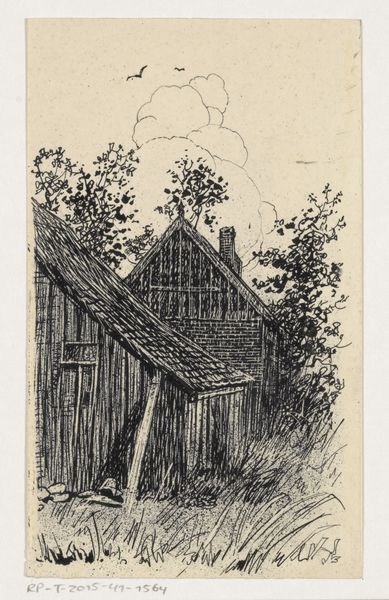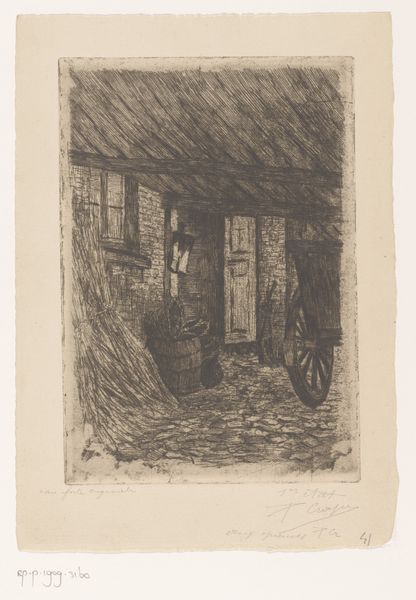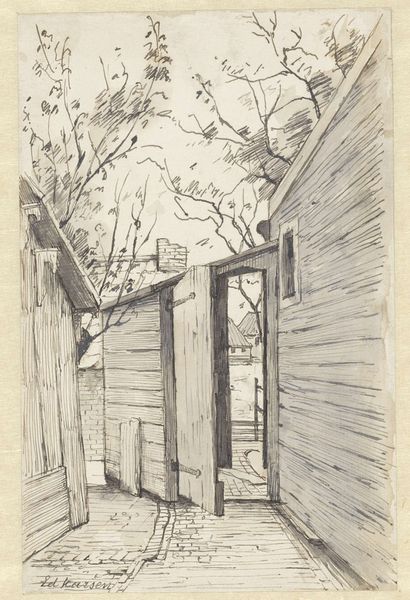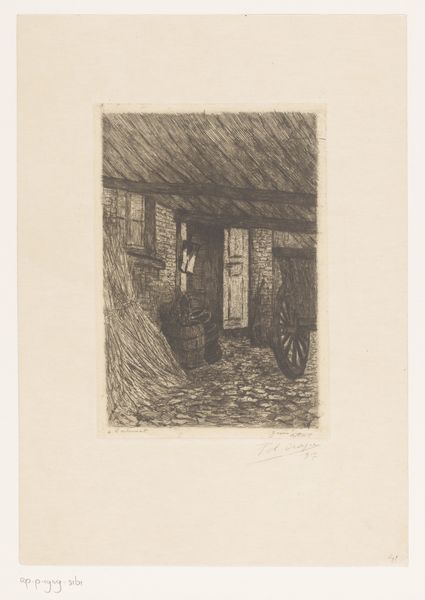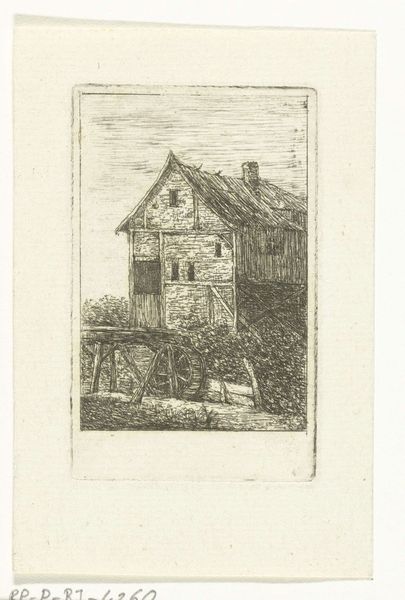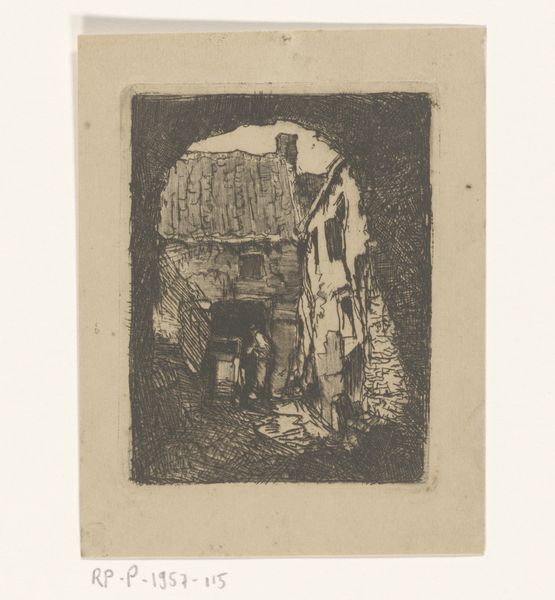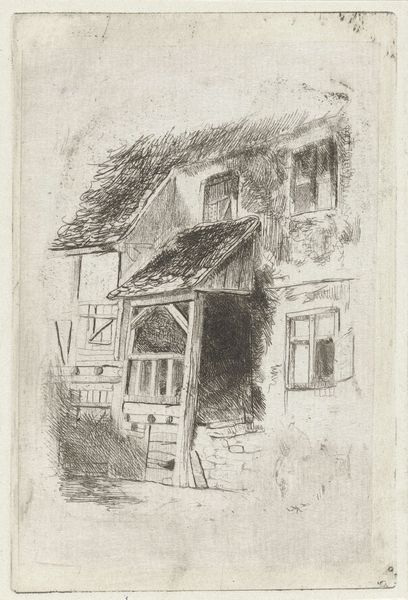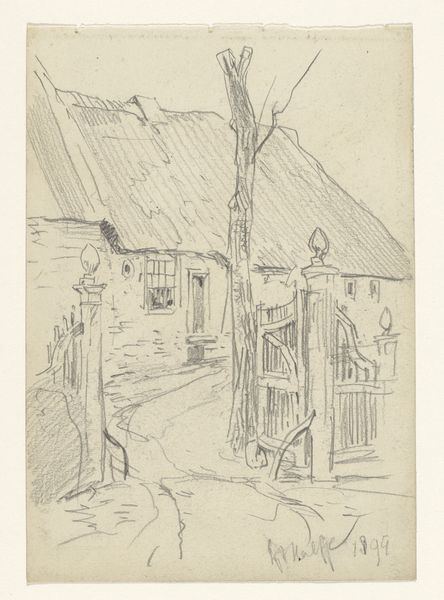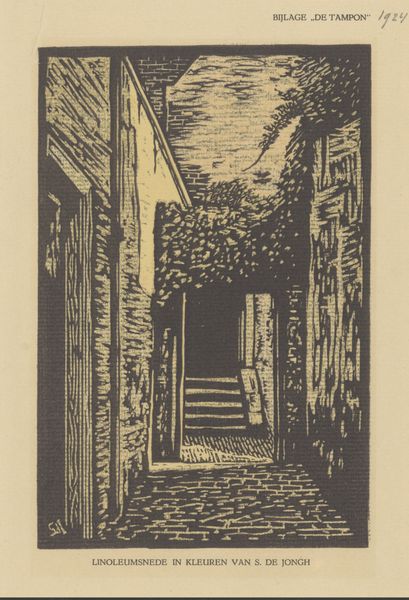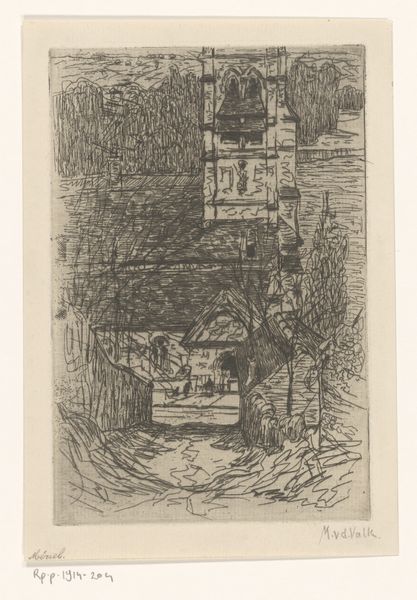
drawing, print, woodcut
#
drawing
#
dutch-golden-age
# print
#
landscape
#
etching
#
woodcut
#
northern-renaissance
Dimensions: height 252 mm, width 173 mm
Copyright: Rijks Museum: Open Domain
Curator: Immediately, I’m struck by the high contrast, almost stark presentation. The sharp lines create a distinct and slightly somber mood. Editor: Indeed. This woodcut, "Houten boerenschuur," or "Wooden Barn," by Harm Ellens, dates to 1924 and offers us a peek into a rural past. Note the bold use of light and shadow to define the rustic architecture and surrounding landscape. Curator: That rustic element is precisely what captures my attention. The barn itself seems burdened with years of untold stories. There’s a poignant symbolism here, don't you think? This humble structure represents resilience, perhaps even endurance against the relentless forces of time and nature. Editor: Absolutely. Woodcuts, particularly those with this level of detail and expressiveness, often speak to the lived experience of a community. During this period in the Netherlands, many artists explored themes of rural life, perhaps idealizing or documenting a way of life they felt was slipping away in the face of modernization. The barn is more than just a building, it's a cultural artifact, embedded with the labor and hopes of the people who used it. Curator: The deliberate lack of human presence emphasizes that solitude. It’s as if the barn stands as a silent sentinel. Consider, also, the dense foliage that appears to crowd the structure, imparting both refuge and a slight feeling of oppression. Editor: I agree. The formal aspects contribute to the themes it evokes. Ellens uses the graphic, textural qualities inherent to the woodcut medium to full effect, mirroring the weathered surfaces he depicts. I imagine viewers in 1924 responded strongly to these images of authentic, ‘unspoiled’ rurality. Curator: Seeing it now, a century later, evokes both a longing for simpler times, perhaps a touch naive, and an appreciation for the lasting power of such direct visual language. It shows how cultural memories persist, echoing through art across generations. Editor: For me, Ellens’ "Houten boerenschuur" demonstrates how even seemingly simple scenes offer potent commentary on shifts in Dutch society during the interwar years. I will not forget this artwork.
Comments
No comments
Be the first to comment and join the conversation on the ultimate creative platform.
